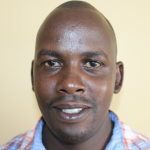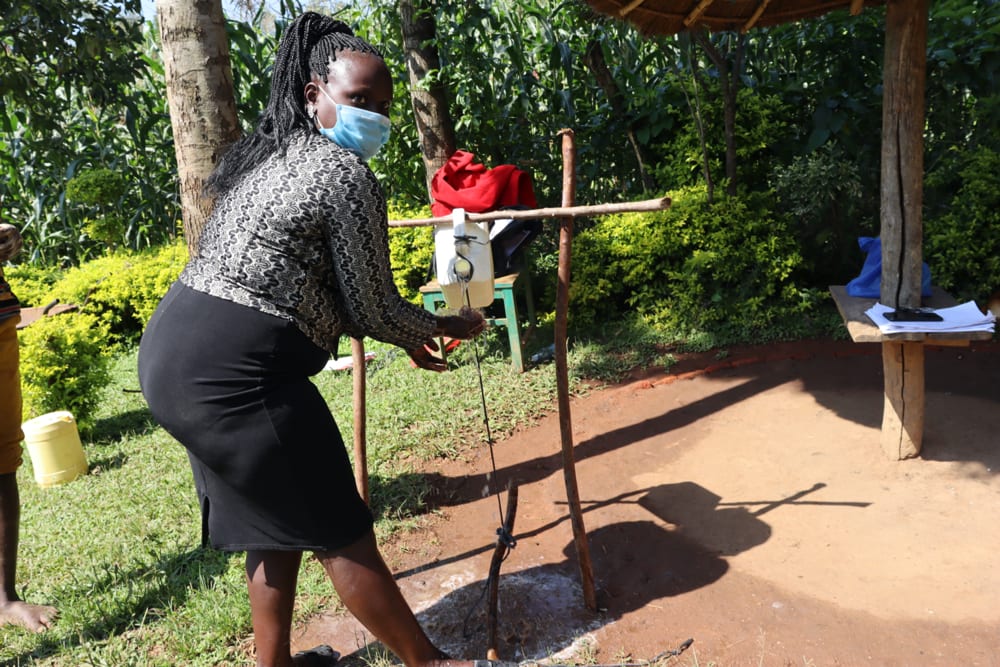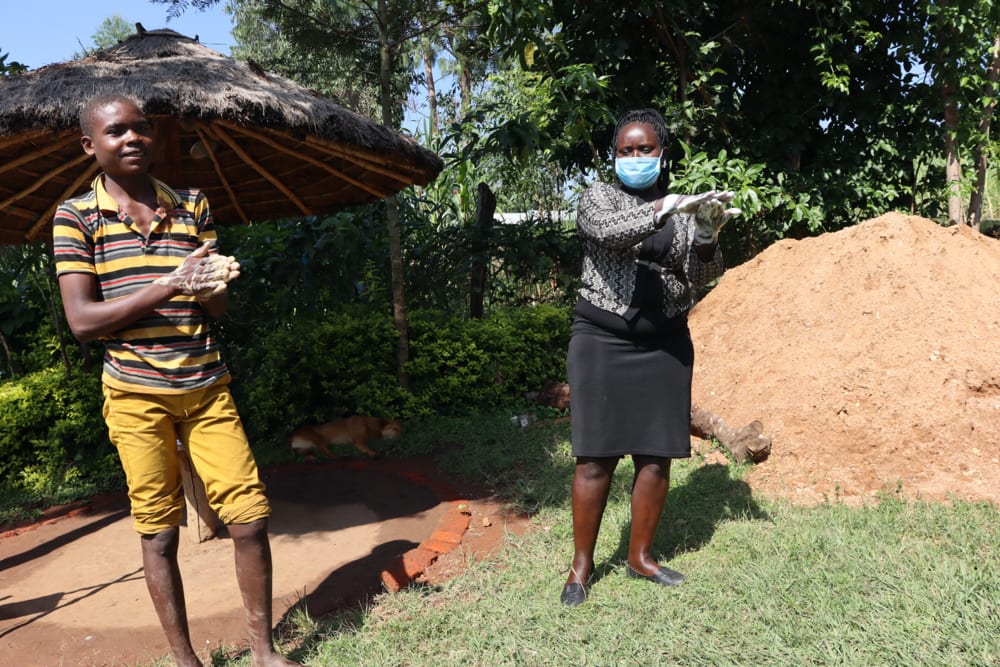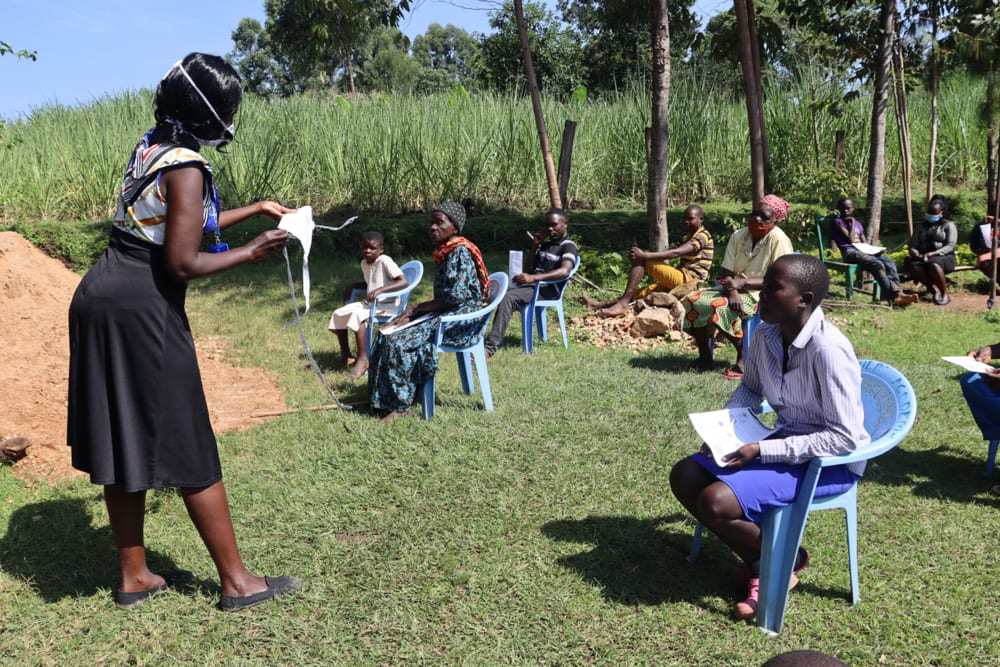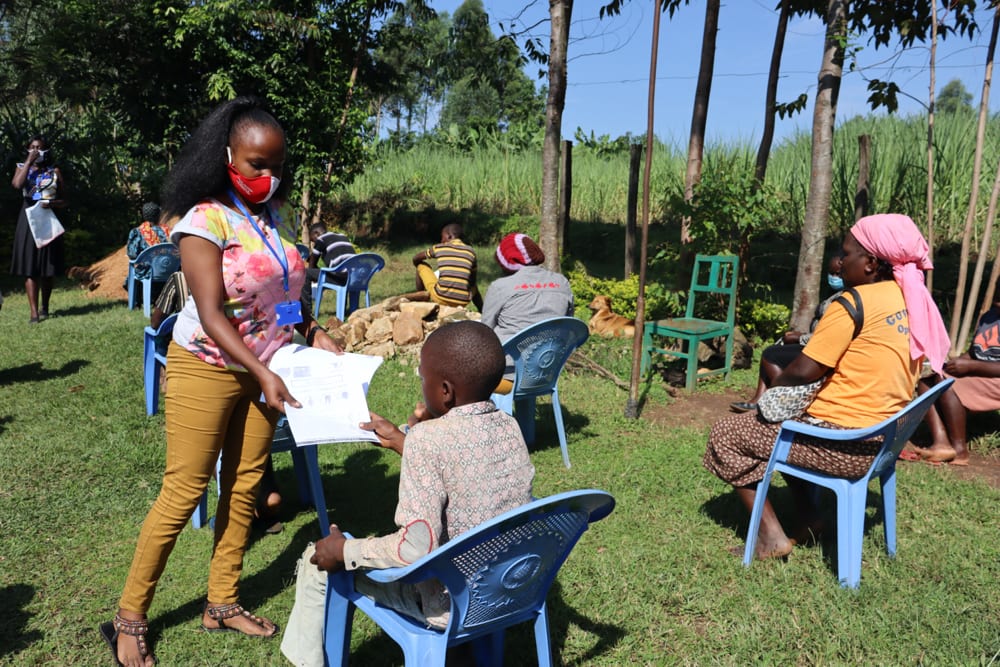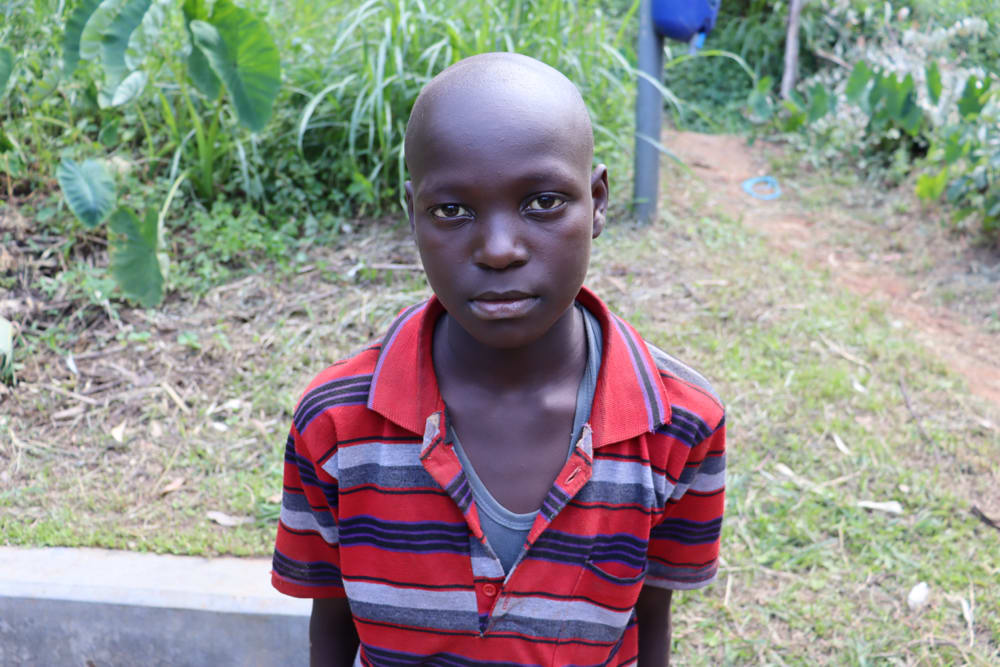Kakamega North sub-county is an area known for growing maize and sugarcane. And, it is also home to Mukangu Village.
Women here are tasked with household duties, including fetching water each day from the unprotected Lihungu Spring. The spring is a short walk for most of the 280 people who use it as their primary water source. A metal pipe was added to the source a few years ago - an attempt by the community to help make it easier to collect water.
However, it is still open to contamination since it was not protected properly. This puts people at risk of contracting waterborne diseases that lead children to miss school and parents to spend money treating themselves and their children.
The sanitation situation in the community also needs improvement. Nearly half of homes do not have latrines. Many of the latrines that exist are not in very good shape.
The place is so peaceful simply because it is a rural area away from town and factories. Maize, grown for consumption, and sugarcane, a cash crop, are visible throughout the community. They make the area look very green and attractive to the eye. Buildings in Mukangu Village are mostly semi-permanent, the walls are plastered with mud and roofed with iron sheets while others are made of bricks.
The community members in Mukangu Village usually wake up early in the morning. Women prepare breakfast for the family before engaging in the days' activities such as fetching water, washing utensils, weeding, or harvesting. Men are often the breadwinners of their families. They will work casual labor jobs such as brick-making or weeding crops for larger farms.
Most families have at least a small plot of land that they also manage. They grow crops like maize, beans, cassava and sugarcane. Some will also rear cattle. Others own small-scale businesses and boda-boda riding (motorcycle taxi) to earn their living.
What we can do:
Training
"The hygiene and sanitation here is wanting; most of the families do not have compost pits for dumping rubbish, and the available pit latrines are in a bad state," Mr. Elijah Lihungu told us during a visit to the community.
Community members will attend hygiene and sanitation training for at least two days. This training will ensure participants have the knowledge they need about healthy practices and their importance. The facilitator plans to use PHAST (Participatory Hygiene and Sanitation Transformation), CLTS (Community-Led Total Sanitation), ABCD (Asset-Based Community Development), group discussions, handouts, and demonstrations at the spring. One of the most important topics we plan to cover is the handling, storage, and treatment of water. Having a clean water source will be extremely helpful, but it is useless if water gets contaminated by the time it’s consumed. Handwashing will also be a big topic.
Training will also result in the formation of a committee that will oversee operations and maintenance at the spring. They will enforce proper behavior around the spring and delegate tasks that will help preserve the site, such as building a fence and digging proper drainage. The fence will keep out destructive animals, and the drainage will keep the area’s mosquito population at a minimum.
Sanitation Platforms
Sanitation facilities in Mukangu Village are mostly made of wooden logs for the floor while others have mud walls. These wooden floors are prone to rotting, which puts the users in danger of falling into the pit.
On the final day of training, participants will select five families that should benefit from new concrete latrine floors.
Training will also inform the community and selected families on what they need to contribute to make this project a success. They must mobilize locally available materials, such as bricks, clean sand, hardcore, and ballast. The five families chosen for sanitation platforms must prepare by sinking a pit for the sanitation platforms to be placed over. All community members must work together to make sure that accommodations and food are always provided for the work teams.
Spring Protection
Protecting the spring will ensure that the water is safe, adequate and secure. Construction will keep surface runoff and other contaminants out of the water. With the community’s high involvement in the process, there should be a good sense of responsibility and ownership for the new clean water source.
Fetching water is predominantly a female role, done by both women and young girls. Protecting the spring and offering training and support will, therefore, help empower the female members of the community by giving them more time and efforts to engage and invest in income-generating activities.

 Protected Spring
Protected Spring
 Rehabilitation Project
Rehabilitation Project











